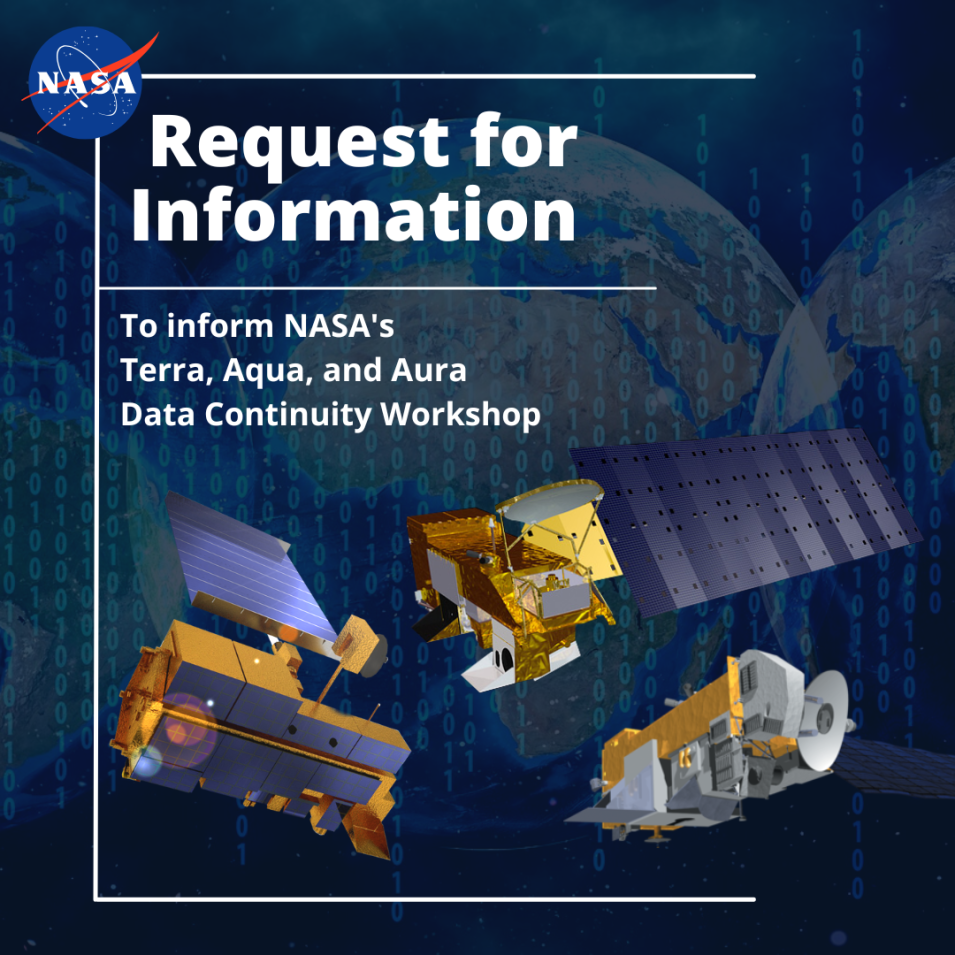A new NASA Request for Information (RFI) seeks input from the science community and stakeholders on data product continuity needs, capabilities, and gaps as NASA’s Terra, Aqua, and Aura missions reach the end of their operational life. The deadline for submitting a response to the RFI is April 4, 2023.
NASA will use RFI responses to help plan a Terra/Aqua/Aura data continuity workshop, which is currently scheduled for May 23-25, 2023. This workshop will determine needs, evaluate current capabilities, identify gaps, and specify potential actions for these missions.
NASA’s Earth Observing System (EOS) was conceived in the 1980s, built in the 1990s, and launched late in 1999 and in the early 2000s. It is comprised of the coordinated, polar-orbiting Terra, Aqua, and Aura satellites. Each satellite carries multiple sensors that collect data for monitoring and understanding key components of the climate system and their interactions.
All three satellites are nearing their end of life. The inevitable end of the missions creates a challenge for the NASA research and applications communities that have relied on the continuous availability of EOS mission data for process studies, application development, and the detection of long-term trends.
It is critical to plan for and minimize impacts for NASA stakeholders caused by the end of these missions. Additionally, it is important to review preparations, actions, and alternatives to facilitate transition to alternate data sources during this final phase of EOS satellite operations.
